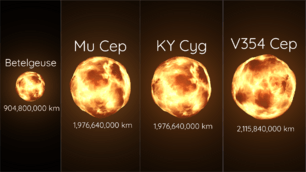Emily Levesque facts for kids
Quick facts for kids
Emily Levesque
|
|
|---|---|
| Born | 1984 |
| Alma mater | MIT University of Hawaii |
| Known for | Astrophysics |
| Awards | Annie Jump Cannon Award in Astronomy Sloan Fellowship Guggenheim Fellowship Fulbright Fellowship |
| Scientific career | |
| Thesis | Exploring the Environments of Long-Duration Gamma-Ray Bursts (2010) |
| Doctoral advisor | Lisa Kewley |
Emily Levesque (born 1984) is an American astronomer who studies giant stars to learn how galaxies are born and change over time. She is an associate professor in the Department of Astronomy at the University of Washington.
Besides her research, Levesque has written three books. One of her most famous is The Last Stargazers: The Enduring Story of Astronomy's Vanishing Explorers, a popular science book published in 2020.
Contents
Education and Early Life
Emily Levesque grew up in Taunton, Massachusetts. She loved science from a young age. In 2006, she earned a degree in physics from the Massachusetts Institute of Technology (MIT).
She then went to the University of Hawaii to continue her studies. In 2010, she earned her PhD in astronomy. For her final project, she studied the areas around powerful explosions in space called gamma-ray bursts.
Career as an Astronomer
After finishing her PhD, Levesque worked as a researcher at the University of Colorado from 2010 to 2015. During this time, she received two special awards called fellowships, which supported her work.
Since 2015, she has been a professor at the University of Washington, where she teaches and continues her research.
In 2015, Levesque and two other scientists, Rachel Bezanson and Grant R. Tremblay, studied the Physics GRE. This was a test that students had to take to get into many astronomy graduate programs. They found that a student's score on the test didn't predict how successful they would be as a scientist.
Because of their research, the American Astronomical Society recommended that the test should not be required. Now, many universities no longer require students to take the Physics GRE to apply for their astronomy programs.
Researching the Stars

Dr. Levesque studies some of the biggest and brightest stars in the universe. She uses powerful telescopes on Earth and in space to learn about them.
With the Hubble Space Telescope, she looks at light from faraway galaxies to understand how stars are born inside them. She also uses giant telescopes on the ground, like the Gemini and Keck observatories in Hawaii, to study huge stars called red supergiants.
Her work has led to exciting discoveries. She has found many new red supergiants. She also found a star named HV 2112, which might be a very rare type of star called a Thorne-Zytkow object. Scientists think these objects form when one star swallows another one!
A Funny Science Story
In 2017, a fun science moment happened on Twitter. Dr. Levesque found that her office had a lot of jumping spiders. She and another scientist, Jamie R. Lomax, started tweeting about whether the spiders could see things in space.
They got help from Nathan Morehouse, an expert on spider vision. He figured out that the tiny jumping spiders could probably see the shape of the Moon in the night sky. This fun conversation between scientists from different fields was celebrated online as a great example of how people can share ideas and learn new things together.
Awards and Honors
Emily Levesque has received many awards for her important work.
- In 2014, she won the Annie Jump Cannon Award in Astronomy. This award is given to women who have made amazing contributions to astronomy early in their careers.
- In 2017, she was given a Sloan Fellowship, an award for promising young scientists.
- In 2022, she received a Guggenheim Fellowship, a major award that supports leaders in science and the arts.
- In 2023, she worked in New Zealand as a U.S. Fulbright scholar, where she researched Thorne-Zytkow objects.
- In 2023, a book she co-wrote, Understanding Stellar Evolution, won the Chambliss Astronomical Writing Award for being an excellent science book.
See also
 In Spanish: Emily Levesque para niños
In Spanish: Emily Levesque para niños

